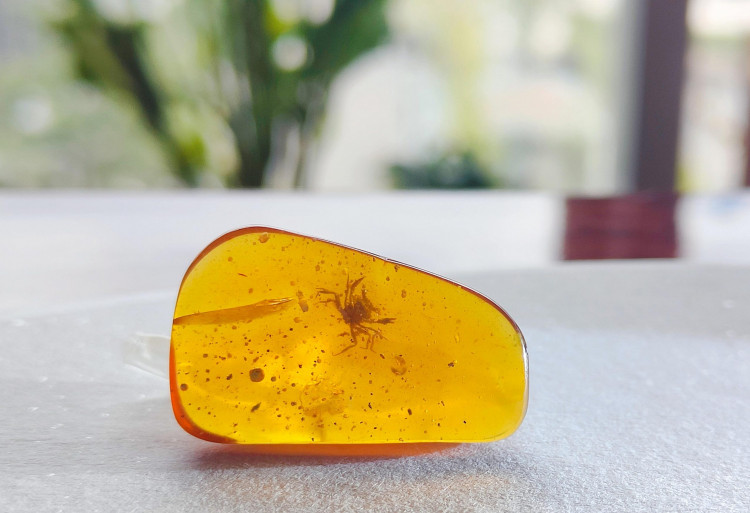The oldest aquatic animal preserved in amber has been discovered by scientists, and it is the most complete crab fossil ever unearthed.
The 100-million-year-old amber, found in the Southeast Asian jungles, is said to contain the oldest modern-looking crab ever discovered. The discovery sheds new light on the evolution of these crustaceans and their global spread.
This new type of "true crab" (Brachyura) measures just five millimeters in leg span and has been dubbed Cretapsara athanata. The name is intended to honor the crab's period as well as Apsara, a South and Southeast Asian spirit of the skies and waves.
"Athanatos" means "immortal," a sly reference to the fossilized crab being frozen in time.
"The specimen is spectacular, it is one of a kind. It's absolutely complete and is not missing a single hair on the body, which is remarkable," lead author Javier Luque, a postdoctoral researcher in the Department of Organismic and Evolutionary Biology at Harvard University, said in a news release.
Nonmarine crabs first appeared on land and in freshwater about 75 to 50 million years ago, according to previous fossil records, which mostly consist of bits and pieces of claws.
This latest discovery dates back at least 100 million years, answering Luque's initial question about what this crab was up to in the jungle and aligning the fossil record with long-held theories about crab genetics.
Despite its striking resemblance to modern-day shore crabs, the team was taken aback when they discovered that C. athanata lacked gills and lung tissue. This shows that the crab was semi-aquatic at the very least.
That's odd because the majority of crab fossils discovered in amber so far have been from tropical land and tree-dwelling crabs, which explains how they ended up trapped in tree amber.
It was also plausible, they suggested, that it was migrating onto land, similar to the renowned red Christmas Island crabs, which deliver their young into the sea and then swarm back onto shore.
The Longyin Amber Museum purchased the amber specimen from a trader in Tengchong, near the Myanmar border in southern China, in August 2015, the study's authors said.






